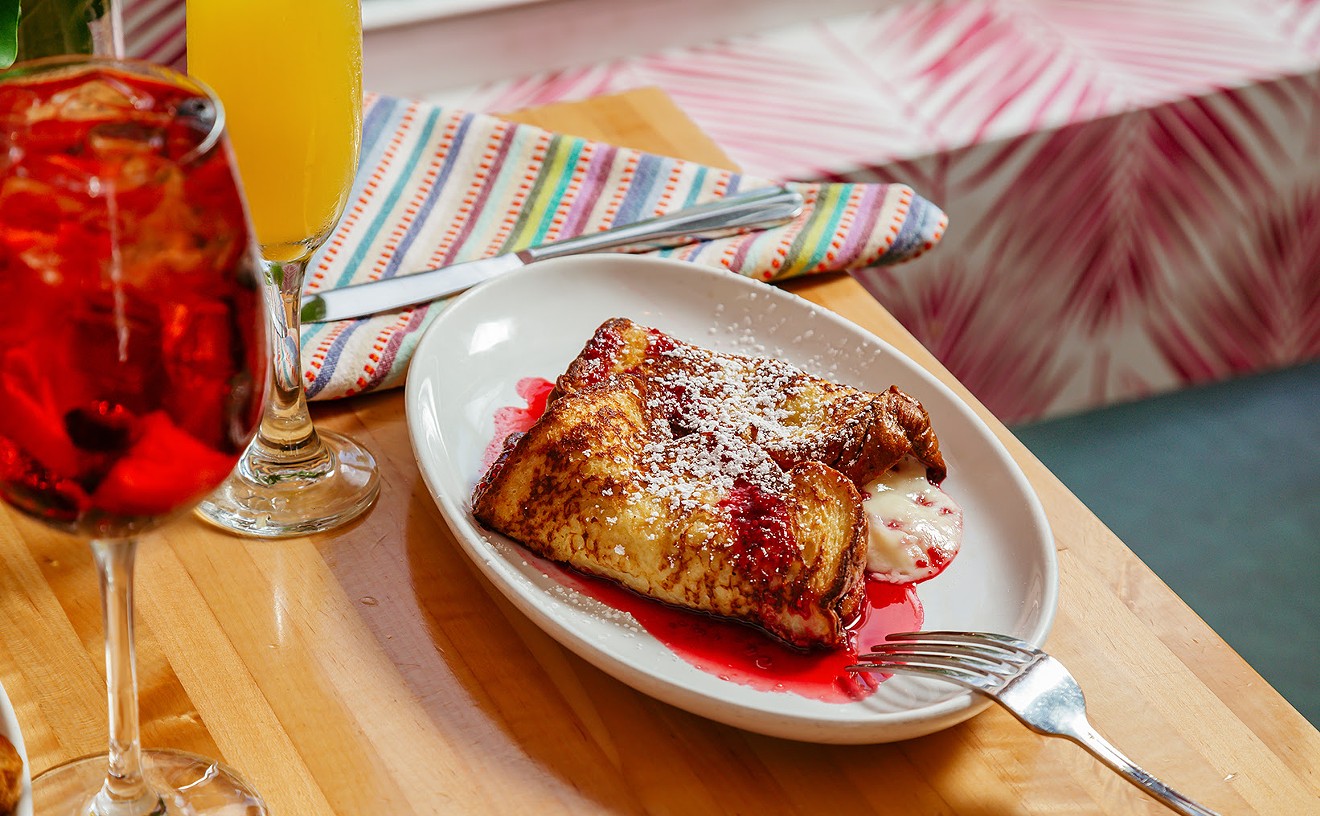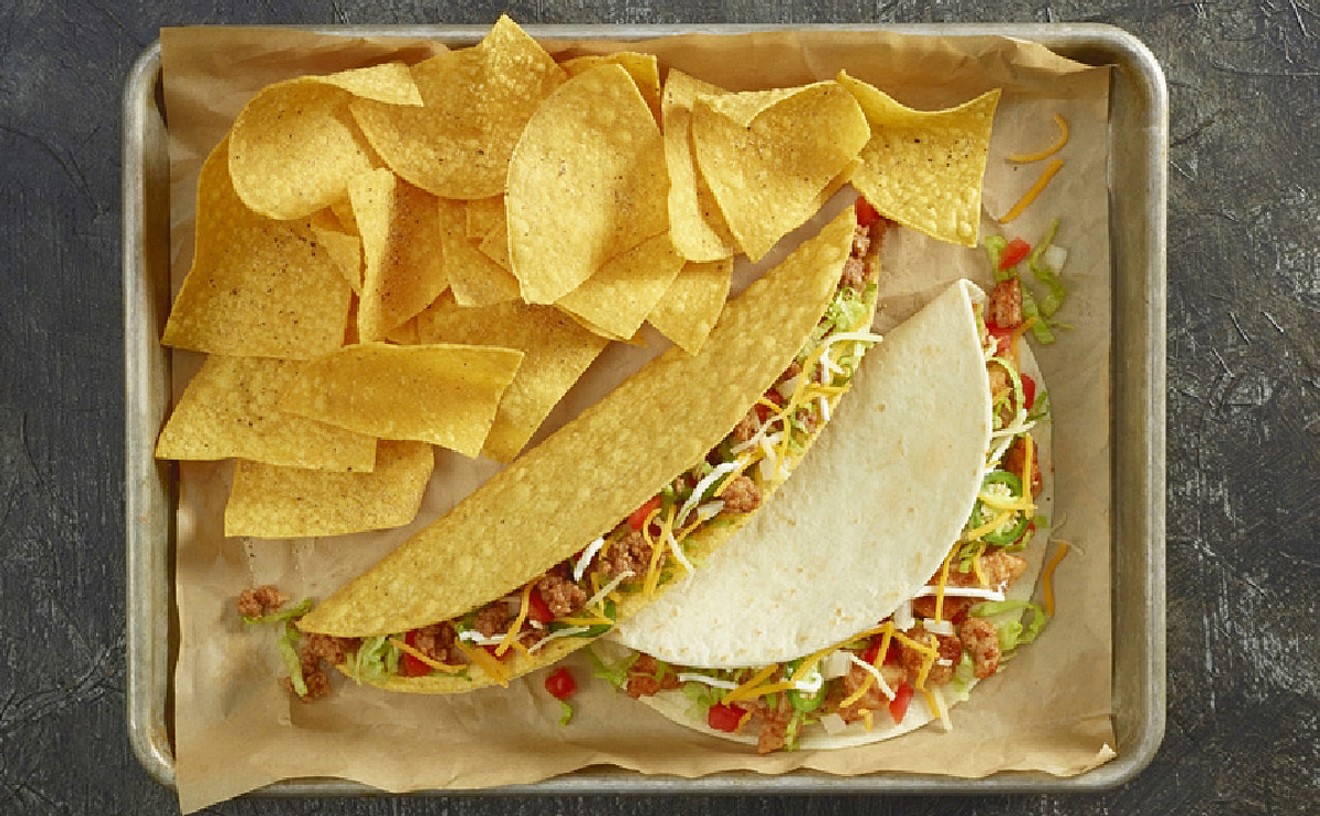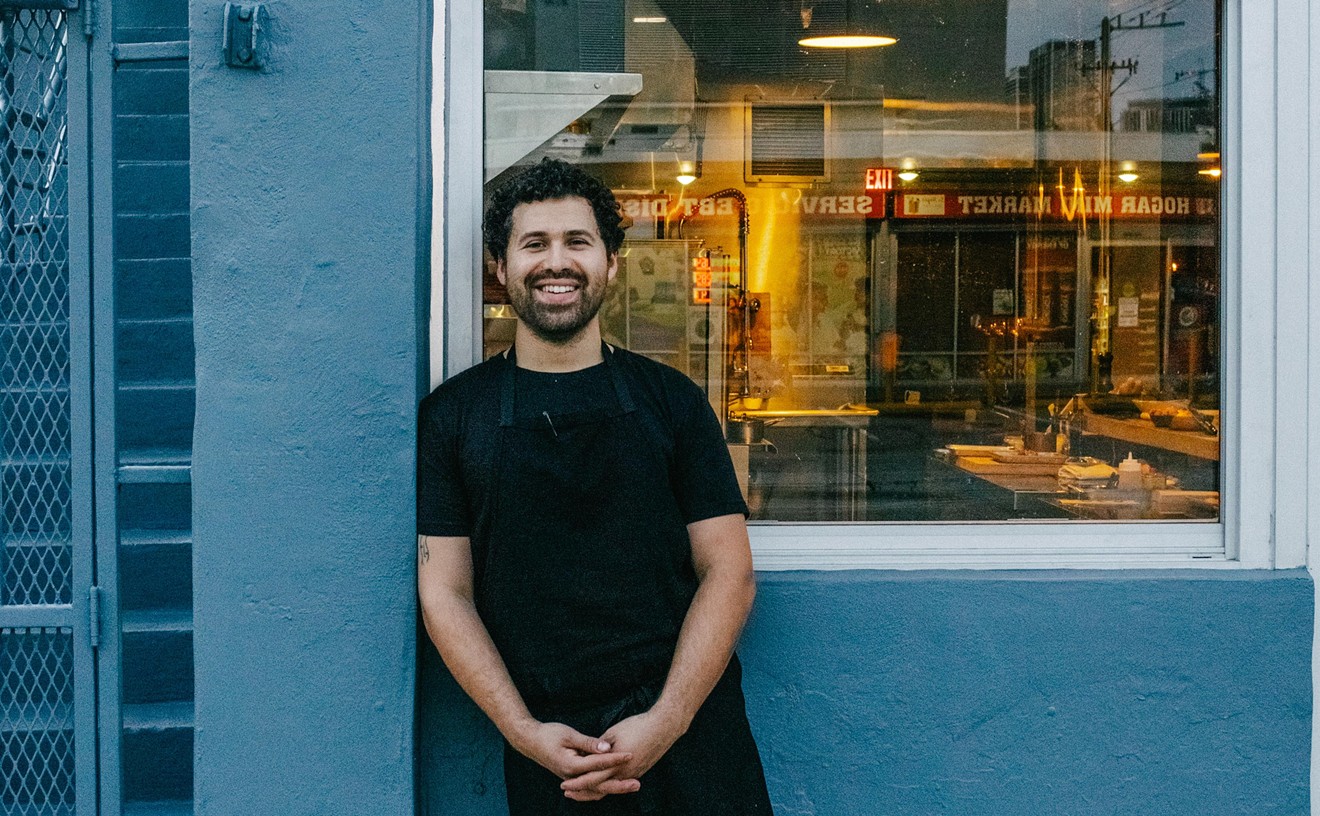Nearly four inches long, the sand dune oyster from Prince Edward Island was so plump it was bulging out of its shell "like a large breast in a small brassiere," as Rodney Clark, owner of Rodney's Oyster House in Toronto, puts it. Intensely briny and wonderfully sweet, the fat beige oyster tasted like a big mouthful of salty butterscotch ice cream.
Clark has a lot to say about the oyster's reputation as an aphrodisiac, a subject that often comes up around Valentine's Day. He launches into an embarrassingly detailed yarn about a hooker nicknamed "the Catwoman" who used to frequent Rodney's. After sharing a few oysters with some guy at the bar, she would slip a hand into his lap and grope him. "It was quite a floor show for the people at the tables next to the bar," Rodney recalls. "We finally had to ask her to leave."
Oysters are to Valentine's Day what turkey is to Thanksgiving, and this might be the best time to enjoy them in recent memory: The market is brimming with the bivalves, and the recession is keeping prices low. The "Great American Oyster Renaissance" is in full bloom.
"I'm buying 200 to 300 dozen a week," says David Bracha, chef/owner of River Oyster Bar, a downtown Miami fixture for the past five years. "Things are a little different now because of the economy, but oysters are selling really well. I'm pleasantly surprised."
Bracha "doesn't see much of an increase" in sales during Valentine's Day, but adds, "Oysters obviously have this whole thing about being an aphrodisiac, so we'll come up with a neat Valentine's menu twist on that." He confidently projects there will be "an increase in the number of two-tops" that night.
Just a few blocks away, customers line the lengthy oyster bar at Oceanaire Seafood Room. In tandem with those filling the restaurant's 290 seats, they will go through some 300 oysters per night. "There is a demand," notes Jorge Morgado, who, in light of these numbers, might be stating the obvious. He has been the assistant general manager since the upscale seafood chain premiered in Mary Brickell Village three years ago. "Almost every single table that we have in the dining room consumes oysters," Morgado says. More so on Valentine's Day? "For sure."
We had better enjoy our oysters while we can. Marine biologists and mollusk experts aren't so optimistic about Valentine's Day 2010. Hurricanes Katrina, Rita, Gustav, and Ike have limited the Gulf of Mexico's oyster harvest and damaged oyster reefs. That's bad news for Florida, which harvested three million pounds of oysters in 2007, a crop worth $6.7 million.
And ocean acidification might be an even more disturbing problem. This worldwide phenomenon causes the ocean to absorb excess carbon dioxide that has accumulated in the atmosphere, which in turn makes the water more acidic. This increased acidity, among other things, retards the ability of marine microorganisms to turn calcium into shell. Ocean acidification has been blamed for a slowdown in the creation of coral reefs and might also be the reason that oyster larvae in West Coast hatcheries are dying before they form shells. Predictions are that when the current crop of mature oysters is sold out, there won't be enough new ones to meet demand.
At the moment, though, we can look at the half-shell as being full. "This is a great time of the year to eat oysters," says Bracha. Indeed, seasonality might be as important as geography when it comes to buying oysters. As the water gets colder in the fall, oysters fatten up with a carbohydrate compound called glycogen; to our palate, glycogen tastes like sugar. In the spring, when the water warms, the oyster slowly converts glycogen to gonad in preparation for reproduction. As it does, it begins tasting fishier. Then, in the early summer, the oyster spawns and loses much of its mass and nearly all of its flavor. In France, the largest oyster-producing country in the Western world, 80 percent of the entire oyster harvest is consumed in the one week between Christmas and New Year's.
What is a great oyster to eat right now? If the water temperature in Puget Sound holds, Valentine's weekend might be an ideal time to try the Totten Inlet Virginica (TIV). This sweet, meaty, creamy-beige bivalve is the hottest oyster in the nation. Virginica is native to the Atlantic and Gulf coasts, but the Totten Inlet Virginica comes from Washington State.
Bracha thinks the TIVs are "fantastic" and occasionally features them among the River's eight to 12 varieties du jour. "I sell a lot from New England and from the Long Island area, like Cape Cod Bay, Blue Point — which is very typical, but a decent oyster. Also Wellfleets, and Belon oysters from Maine, which are unique. People either really like them or they think they're bad. They're very metallic-tasting."
The River Oyster Bar's West Coast varieties include some of Bracha's favorites from British Columbia, such as Hunter Point and Fanny Bay ("a great oyster"). The restaurant always carries Kumamoto from Northern California. "My West Coast oysters are, believe it or not, less expensive. I guess it's just my connection out there." The River's oysters range from $2.25 to $3 apiece, and are half-priced Monday through Saturday during happy hour from 4:30 to 7 p.m.
Bracha also relishes Canadian oysters, such as those from Prince Edward Island, but boycotts them "because there's a big seal hunt up there every year where they kill thousands and thousands of seals. And the hunters are the same people that farm the oysters."
Oceanaire generally proffers ten to 12 varieties "flown in daily from a main purveyor in Boston and another in Washington," according to Morgado. They vary in price from $2.95 to $3.95 each. Some of the oysters served here come from the West Coast, such as Washington's Sister Point and Otter Cove, as well as the restaurant's "crowd favorite," the Kumamoto. East Coast selections include the James Weaver from Virginia, the Orient Point from New York, and the giant Blue Point from Connecticut.
Some oyster bar owners are supplementing expensive farmed specimens such as TIVs, Duxburys, and Malpeques with oysters from the Gulf of Mexico. Yet there are differences between the two grades that extend beyond cost. Gulf oysters are the product of a fishing industry that goes back many generations. So-called gourmet oysters are produced by a new breed of cultivators who are reviving the industry in areas where oyster fishing long ago died out. It has been said that oyster fishermen are exploiting a public resource, while oyster farmers are caring for a crop.
Apalachicola Bay, southwest of Tallahassee, produces the premier oyster appellation on the gulf. The rapid flow of the nutrient-rich Apalachicola River creates an ideal oyster-growing environment; while virginica oysters take two to three years to reach three inches, Apalachicola oysters grow to maturity in an average of 18 months.
Bracha, though, shies away from Apalachicolas. "I really like them, but the problem is that you don't know exactly where they're coming from. All the other oysters are from specific areas that come with a tag that tell you where they are harvested from. A lot of the gulf oysters are wonderful, but if they're not from inspected waters, you can get pretty sick."
A shortage of oysters within the next couple of years might be inevitable. But will it be a temporary dip in a generally upward curve? Or are we at the pinnacle of the Great American Oyster Renaissance, looking at a long downhill slide?
On the positive side, oysters are resilient. The Clean Water Act of 1972, responsible for starting the oyster revival, cleared up rivers, streams, salt marshes, and estuaries that had been clogged with algae. Crabs and fish began to appear where they hadn't been seen in decades. Natural oyster reefs came back, and tidelands where oysters had once been cultivated were viable again.
Hopeful oyster industry experts say there is every reason to expect that, two years from now, the Texas oyster harvest will be bigger than ever. Louisiana, the nation's largest oyster-producing state, could return to full production within this time frame as well. Meanwhile, some other oyster areas are taking up the slack. Bright spots include Florida, which has dramatically increased production in the past three years. This is promising news for oyster lovers everywhere — and the Catwoman is probably pretty happy about it too.
Robb Walsh is a writer at our sister paper the Houston Press and author of Sex, Death and Oysters: A Half-Shell Lover's World Tour, which was released January 20.











